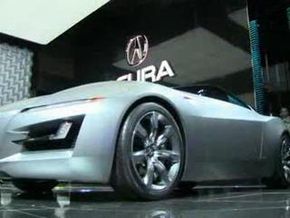Imagine yourself riding along in your car and accelerating horizontally (that means increasing the speed of the car as you're going straight ahead). You hit a bump in the road, and the car jumps into the air (vertical acceleration), then drops back down onto the road due to gravity. Not a very pleasant ride, is it? To minimize that kind of bumpy ride, car manufacturers install the car suspension system to absorb the shocks from imperfect roads and the energy of vertical acceleration. In this way, the passengers sitting in the body of the car won't get a bone-jarring ride as the wheels deal with the small mountains and valleys – bumps and potholes -- in the road.
Engineers who work for car manufacturers have to come up with solutions to allow passengers and drivers to experience a smooth ride while the car experiences rough roads; keep the tires in contact with the road to maximize the driver's control over the car (braking, accelerating and steering); and minimize the effects of centrifugal force as the car turns a corner.
Advertisement
Springs, shock absorbers and struts each have their job to do in ensuring a smooth ride. The springs absorb the vertical acceleration energy from the bumps in the road, and the shock absorbers transform this energy into heat energy, which is dissipated through the hydraulic fluid in the cylinder of the shock absorber. Struts (shock absorbers mounted inside springs) function by giving structural support to car suspension and by dampening the vertical acceleration energy. Yet another option for a smooth ride is anti-sway bars, which are metal rods attached to the suspension system at the sides of the cars. When one wheel hits a bump, the anti-sway bar transfers some of the movement to the other wheel to reduce the car's swaying.


